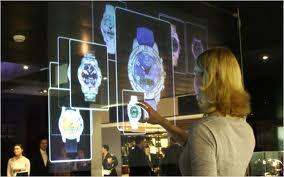In this paper, we adapt and validate two constructs, perceived extrinsic warm-glow (PIWG) and perceived intrinsic warm-glow (PIWG), to measure the two dimensions of consumer perceived warm-glow (i.e., extrinsic and intrinsic) for use with the practice of technology adoption model-ing. Taking an experimental approach, participants were exposed to one of four vignettes de-signed to simulate the absence or the presence of warm-glow (specifically, extrinsic warm-glow, intrinsic warm-glow, and concurrently extrinsic and intrinsic warm-glow). The results revealed that both constructs measured their respective forms of warm-glow with two caveats. The first that singularly trying to evoke extrinsic warm-glow led to only a slight increase in consumer perception of extrinsic warm-glow. We attributed this finding to individuals not being attracted to technology products that overtly target and seek to satisfy their vanity, instead preferring technology that does so subtly. The second that singularly trying to evoke intrinsic warm-glow also resulted in the manifestation of extrinsic warm-glow. Thus, warm-glow appears as a blend of extrinsic and intrinsic dimensions. A finding serves to reinforce what has already been reported in the warm-glow literature and the idea of impure altruism.
翻译:在本文中,我们调整和验证了两种结构,一种是外观温暖(PIWG),一种是外观温暖(PIWG),一种是内观内在温暖(PIWG),以测量消费者认为温暖(即外观和内在)的两个维度(即外观和内在),与技术采用模型的做法一起使用。在实验中,参与者接触了4种经脱签的维格特,以模拟缺乏或存在温暖(具体而言,外观温暖(PIWG),内在温暖(PIWG),以及同时外观和内在温暖(PIWG)),以衡量消费者认为温暖(PIWG)的两个维度(即外观和内在温暖(PIWG),以两个洞穴衡量各自的温暖(热)形式。第一种是试图唤起外观温暖(Exgrin)热(Excrin)的消费者感知觉觉只是略有增加。我们把这一发现归功于那些没有被吸引到过度目标的技术产品的人,寻求满足其虚度,而更喜欢其虚度的技术。第二个是试图以如此隐含的技术。第二个是试图以暖化的内观来唤起内在的温暖(Helg-rog-rodu)的内观的内温质(Asurg-hilling)的内观,也表现了热的自我的自我的外观。





